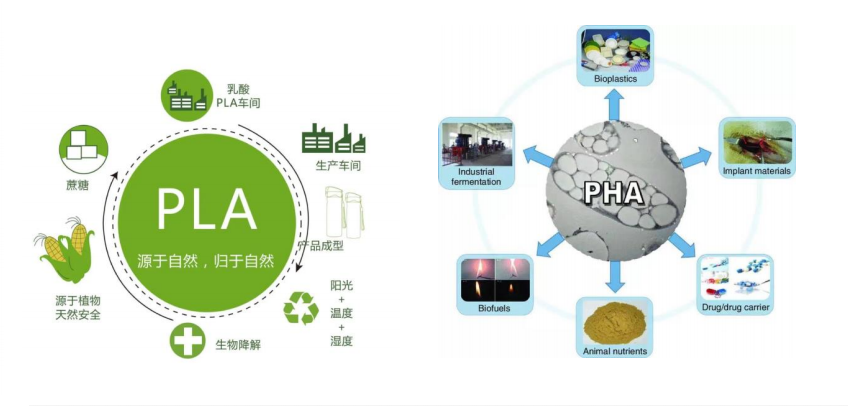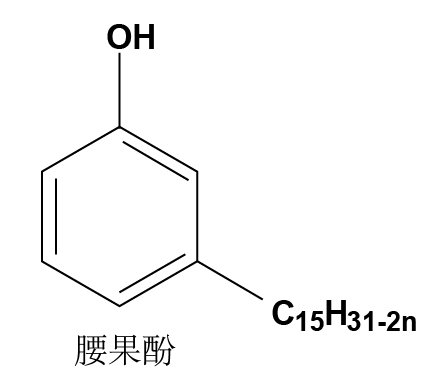
News
In 2020, it was rated as a national specialized and new "little giant" enterprise by the Ministry of industry and information technology
2023-03-28 543
Introduction
The polymer materials industry has changed from the traditional concept of “Resources - Products – Waste” to the ecological concept of “Resources - Products - Renewable Resources - Renewable Products”, which aims to obtain maximum economic output and minimum waste discharge for the production and processing of polymer materials, with as little resource consumption and minimal environmental cost as possible, and realize the integration of economic, environmental and social benefits. Bio-based antioxidants are very different from traditional additives synthesized from chemicals. Its raw materials come from renewable biomass, which has the characteristics of green, economical and recyclable. With the dwindling petroleum resources and the requirements of sustainable social development, chemical products produced from bio-based raw materials are the only way for mankind to achieve sustainable development and can alleviate the dependence of the antioxidant industry on petrochemical products and the environmental pollution caused by it. Therefore, the research and development of bio-based products has become a cutting-edge trend in the field of scientific and technological innovation in the world.
As the most promising material, bio-based materials have broad market prospects. However, China’s bio-based materials are currently facing problems such as small industrial scale, low labor productivity, and unadvanced technical structure. And research is disconnected from the industry, 70%~80% of which relies on imports. The low level of basic research directly restricts the development and application of new technologies and materials. Although China has made some progress in the research and industrialization of PHA, PLA and other aspects, compared with developed countries and areas such as the United States, Europe and Japan, the development of our bio-based materials industry still faces many problems to be solved. So far, main intellectual property rights of bio-based materials are still in the United States, Europe, Japan and other developed countries. At present, environmentally friendly materials such as PLA and PHA belong to the emerging materials industry. In the aspect of price, the price of polypropylene is less than 1 US dollar/kg, and the price of some of the cheapest biodegradable plastics also requires 3-6 US dollars/kg, so it cannot compete directly with the mass production of plastic materials based on the oil industry.

1、Bio-based Raw Materials
Bio-based raw materials refer to some renewable substances, including crops, trees and other plants and their extracts. It is characterized by being green and non-toxic, environmentally friendly and recyclable. At present, the bio-based raw materials used in research mainly include cardanol, natural fatty alcohols, natural sweeteners, natural antioxidants, etc. The antioxidants synthesized from such natural compounds have the characteristics of green, environmentally friendly, renewable raw materials and biodegradability, which are widely used in industry, agriculture, national defense and other fields, can relieve environmental and energy pressure, and at the same time, have important practical significance for promoting renewable energy industry upgrading and energy diversification, which meets the definition of green chemistry and the requirements of national sustainable development strategy. Take the production of nylon as an example, when using new bio-based materials compared to traditional materials, in the production process, carbon emissions will be reduced by 4.31kg per 1kg produced. According to data, if use 50% of China’s straw, 40% of China’s manure, 30% of China’s forestry waste, develop 5% or about 5.5 million hectares of marginal land every year to grow energy plants, and at the same time build about 1,000 biomass conversion plants, then its production capacity is equivalent to an annual output of 50 million tons of oil which close to a Daqing Oilfield’s production capacity (with annual output of 48 million tons of oil).

(1)Cardanol
Cardanol is an organic substance extracted from natural cashew nut oil, with an extensive range of sources and huge reserves, which belongs to the green and environmentally friendly chemical raw materials. Cardanol contains pentadecaylphenol, which makes it have multiple reaction sites such as phenolic hydroxyl, ortho para position of phenol hydroxyl, olefinic bond, etc. By using the structural characteristics of cashew phenol, new functional groups can be generated in polymer molecules to synthesize new structural antioxidants. In addition, cardanol is also widely used in surfactants, adhesives and coatings and currently the cheapest, most accessible and most realistic bio-based polymer raw material that (applied for actual operations) can be put into use.

(2)Natural Fatty Alcohols
Fatty alcohols are linear alcohols with a carbon chain length greater than 8 and hydroxyl groups located at the end of the carbon chain. Natural fatty alcohols are extracted from natural animal and vegetable oils (coconut and palm oils and butter, etc.), which have the three advantages of environmental protection, wide source and renewable. Natural fatty alcohols are inexpensive, non-toxic, safe and reliable, in line with the view of green development. The hydroxyl groups in the molecular structure of natural fatty alcohols can react to prepare a series of fatty alcohol derivatives, which are important basic raw materials to produce plasticizers, antioxidants, surfactants, lubricants, and other additives.
(3)Natural Sweeteners
Sugar alcohol sweeteners mainly include xylitol, sorbitol, fructose, erythritol, etc. Taking xylitol as an example, xylitol is widely distributed in nature and can be extracted from plant raw materials such as birch, corn cob, and bagasse. Commercial xylitol is mainly prepared by hydrolysis and hydrogenation of agricultural plant fibers (such as corn cobs, cane sugar, etc.), and is a common bio-based polyol. Its appearance is white crystalline powder. It belongs to green environmental protection raw materials, with the advantages of renewable, low price, rich source and excellent performance, and is widely used in chewing gum, anti-caries toothpaste, cosmetics, medicine and food.
Xylitol Sorbitol

2、Concept of Bio-Based Antioxidants
Bio-based antioxidants are synthesized from bio-based raw materials instead of traditional chemical raw materials. Bio-based raw materials come from a wide range of renewable sources, which can save China’s fossil raw material resources and is very conducive to the development of China’s circular economy. At present, the design, synthesis and application research of new antioxidant products using bio-based materials as raw materials have become a hot spot in antioxidant industry research.
3、Application of Bio-Based Antioxidants
The development of polymer materials in the direction of green and environmental protection is the current hot spot and trend in the industry Bio-based antioxidants are upgraded products to promote green, health, safety and environmental protection in the polymer materials industry, with the characteristics of environmental friendliness, no polluting residues, and non-adverse effects on the ecosystem. With the rapid development of the world economy and the further development of resources, plastic products are all over every corner of our lives. Bio-based antioxidants can be used in packaging materials in contact with food, such as lunch boxes, water cups and other products, as well as in the field of medical devices, such as infusion tubes, syringes, protective clothing, etc., in addition to aerospace, automobiles, high-speed rail, mobile phones and other high-end manufacturing fields, such as rocket seals, car bumpers, aircraft and high-speed rail interiors, seats and mobile phone shells. Bio-based antioxidants have good migration resistance, and are easily degraded, and will not cause harm to the human body. By adding bio-based antioxidants, performance of products can be enhanced, and service life can be extended.
4、Research Progress on Bio-Based Antioxidants
Antioxidants are mainly divided into hindered phenols and hindered amines as main antioxidants, phosphites and thiodipropionate as auxiliary antioxidants, and other specialized antioxidants. At present, many antioxidant manufacturers and research institutions in the market have begun to develop bio-based antioxidants, some of which have entered the trial phase.
The patent CN201510580081.1 discloses the application of epoxy cardanol as a bio-based hindered phenolic antioxidant. Using cardanol as raw material, under the action of catalyst, the epoxidation reaction was carried out at 40-70°C by dropwise peroxide source, and after 2~5h of the reaction, crude epoxy cardanol was prepared, and then the epoxy cardanol antioxidant product was obtained by post-treatment. This biological based hindered phenolic antioxidant has better thermal oxidative aging resistance than the general-purpose hindered phenolic antioxidant 2,6-di-tert-butyl-4-methylphenol. And its raw material is widely sourced, the price is low, the preparation process is simple, the product is low toxicity and environmental protection, and it can be widely used in vegetable oil and biodiesel and has a good application and development prospect.
The patent CN201610582274.5 discloses a preparation method for liquid phosphite antioxidants. Cardanol and phosphorus trichloride are used as reactants, triethylamine was used as catalyst to carry out a pot stew reaction in the reaction solvent, and after neutralization, filtration and other operations, the liquid phosphite antioxidant target product was finally obtained. It has a short preparation method and process route, mild reaction conditions, easy to operate. The process is green and environmentally friendly, suitable for industrial production. Therefore, it has a good application prospect. The liquid phosphite antioxidant prepared by the preparation method mentioned not only has the thermal stability, antioxidant and excellent hydrolysis resistance of traditional phosphite antioxidant, but also has the characteristics of convenient storage and use and accurate measurement due to its liquid nature.
The patent CN201810428102.1 discloses a novel and highly effective biological phosphite antioxidant and its preparation method. Cardanol was hydrogenated to obtain m-pentadecylphenol, and then m-pentadecylphenol was esterified with phosphorus trichloride and quaternary pentane under certain reaction conditions to obtain a bio-based phospholipid antioxidant. Because this compound contains two trivalent phosphorus, each containing three P-O bonds, and, in which, P is positively trivalent, it can combine with unstable components in the polymer to form peroxides. It has good thermal stability and high antioxidant activity.
The patent CN201710623464.1 discloses the preparation method and application of a class of multifunctional bio-based phenol amine antioxidants. Taking natural phenolic acid, diphenylamine or phenothiazine or phenylenediamine and/or phenylenediamine derivatives and condensation agent in a liquid-phase reaction medium for mixed reaction, wherein the molar ratio of natural phenolic acid to diphenylamine or phenothiazine or phenylenediamine and/or phenylenediamine derivatives was 1:0.8-1:1.1, and the molar ratio of natural phenolic acid to condensation agent was 1: 0.8-1:3, the reaction temperature was -40°C-100°C, and the reaction was carried out in a protective atmosphere, the multifunctional bio-based phenol amine antioxidant was obtained; this bio-based phenol amine antioxidant has excellent thermal stability, good oxidation resistance and anti-wear and wear reduction properties.
Conclusions
In the context of global green chemical industry, the development of polymer materials in the direction of green and environmental protection is the current industry’s hot spot and trend. With the enhancement of safety, health and environmental protection awareness in various countries around the world, the hygiene requirements for various polymer material products have gradually increased, so the green environmental protection requirements for polymer material additives are also getting higher and higher. The research and development of bio-based antioxidants shall be based on the five-in-one modern green chemical development concept of “Molecular Structure Design of High-Performance Antioxidants - Green Bio-Based Raw Material Substitution - Research on Long-Term Renewable Catalysts - Development of Clean Production Technology - Creation of Green Production Processes”. The research and development and application of bio-based antioxidants can alleviate the current situation of shortage of domestic industrial raw materials, with strong economy and good social benefits. It has far-reaching practical significance for promoting China’s energy diversification, upgrading renewable energy industry, and alleviating energy and environmental pressure.
extend
Source of information and pictures from the network
Data source:
Title: Application and Development of Bio-based Antioxidants in Green Chemical Industry
Journal: Contemporary Chemical Research
Patent CN201510580081.1、Patent CN201610582274.5、Patent CN201810428102.1、Patent CN201710623464.1
Previous:
Next:
Copyright: Yingkou Fengguang Advanced Material Co., Ltd.Liao ICP Filing No. 17015501-1 Technical Support:![]() onnuoIAD
onnuoIAD
© COPRIGHT 2021 FENGGUANG ADVANED MATERAL.ALL RIGHTS RESERVED